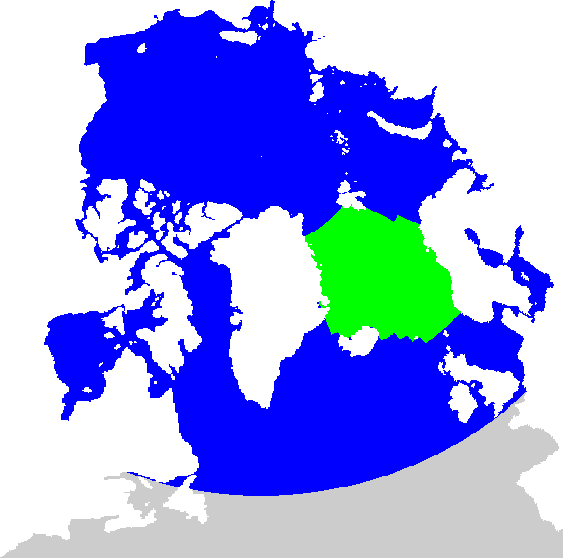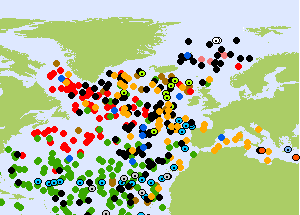MyOcean Arctic MFC: V1 Validation of temperature and salinity profiles
Validation based on data from profiling buoys
Validation of the MyOcean Arctic MFC results for sea surface temperature is performed using data from profiling buoys, which are compiled by the myOcean In Situ TAC. New sets of buoy data are available daily, while each buoy provides one profile for each 10-day period. The data are available from Argo buoys, with most buoys covering a depth range of 0-2000 m. Read more about the Argo project here.
Bias is defined as averages of model values - observed values.
Profile data are available from ftp.nodc.no (sftp server, password required) for the northern North Atlantic and northwards are available from the Norwegian Marine Data Centre (NMD) at the Institute of Marine Reseach (Norway), in collaboration with Coriolis who operates the MyOcean In Situ TAC. Data may also be downloaded from a web interface to the NMD data (in Norwegian).
Layers
-
Validation of temperature and salinity profiles is conducted for depth
averaged values in five pre-defined depth intervals (layers). The intervals
are
- 0-5 m
- 5-100 m
- 100-300 m
- 300-800 m
- 800-2000 m
| January 2011
01-05 01-12 01-19 01-26 |
February 2011
02-02 02-09 02-16 02-23 |
March 2011
03-02 03-09 03-16 03-23 03-30 |
April 2011
04-06 04-13 04-20 04-27 |
May 2011
05-04 05-11 05-18 05-25 |
June 2011
06-01 06-08 06-15 06-22 06-29 |
July 2011
07-06 07-13 07-20 07-27 |
August 2011
08-03 08-10 08-17 08-24 08-31 |
September 2011
09-07 09-14 09-21 09-28 |
October 2011
10-05 10-12 10-19 10-26 |
November 2011
11-02 11-09 11-16 11-23 11-30 |
December 2011
12-07 12-14 12-21 12-28 |
| January 2012
01-04 01-11 01-18 01-25 |
February 2012
02-01 |
Regions

|
The ocean circulation model used in myOcean's Arctic MFC covers the Arctic Ocean, the North Atlantic Ocean and adjacent ocean regions. The northern part is depicted in the figure to the left. Validation of temperature and salinity profiles from model results are performed for two domains:
However, note that there are rarely any profiles north of the Nordic Seas, so almost all observations are either inside of the green region, or in the North Atlantic Ocean and the Labrador Sea, i.e. the part of the blue region to the south and to the west of the Nordic Seas. A sample map of the distribution of ARGO profiles illustrate this limitation. |

|
TOPAZ
The model results are produced with the TOPAZ ocean data assimilation model system. Presently, TOPAZ is run weekly with data assimillation one week prior to the bulletin date, followed by a one-week 100 member ensemble simulation ending on the bulletin date, and finally a 10 day deterministic forecast. TOPAZ was developed and is maintained by the Nansen Center.
TOPAZ results are available as aggregated, best estimates, and as a list of Bulletin dates with separate forecasts.
